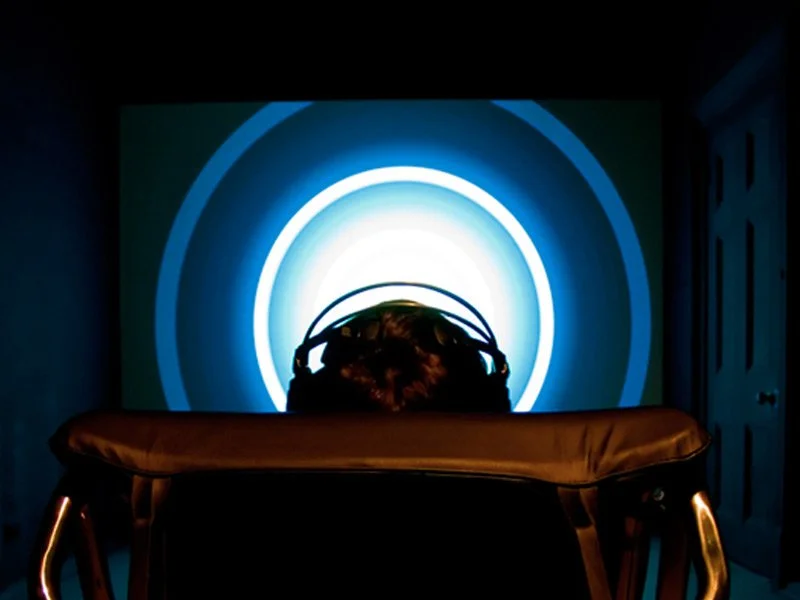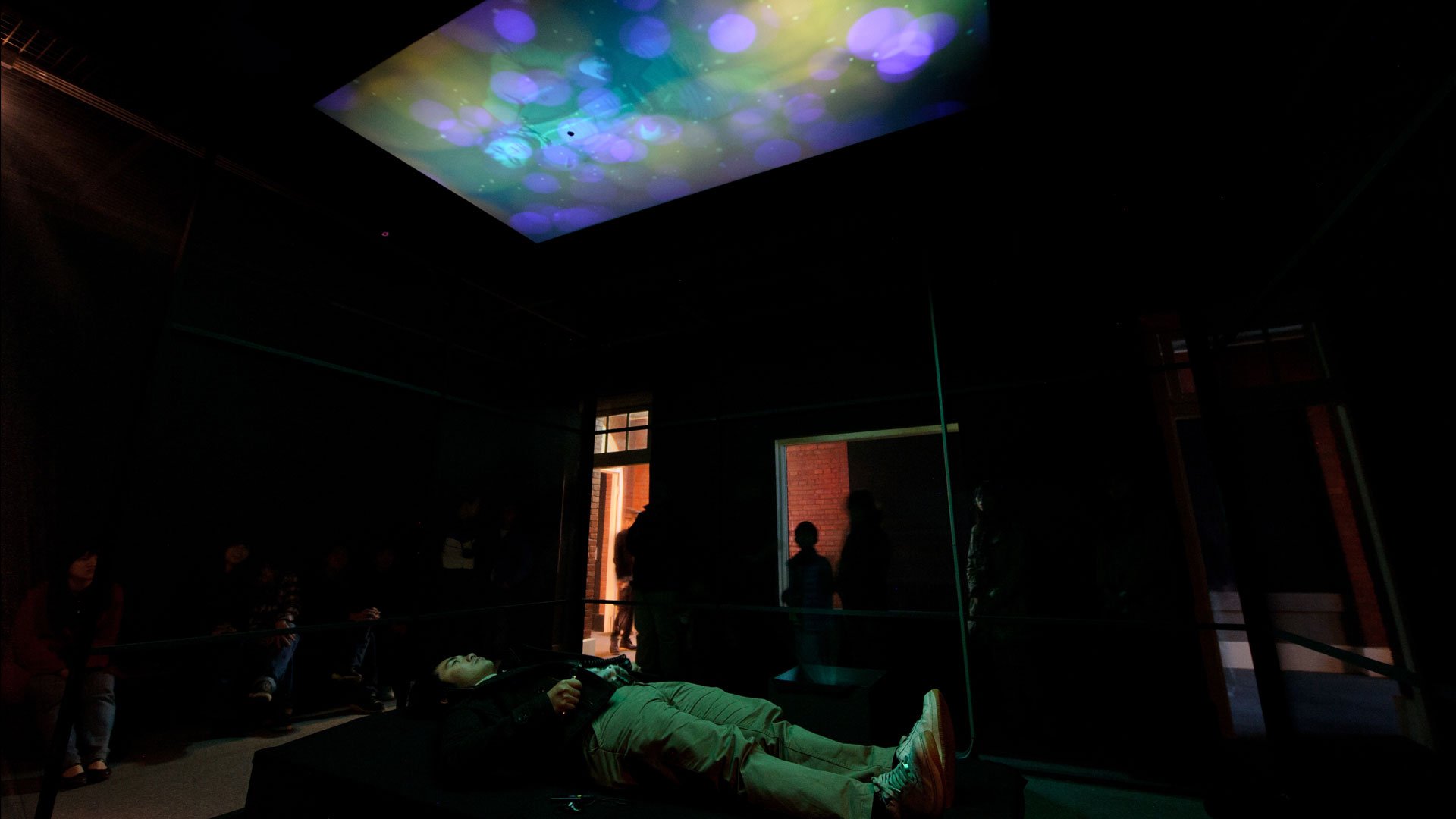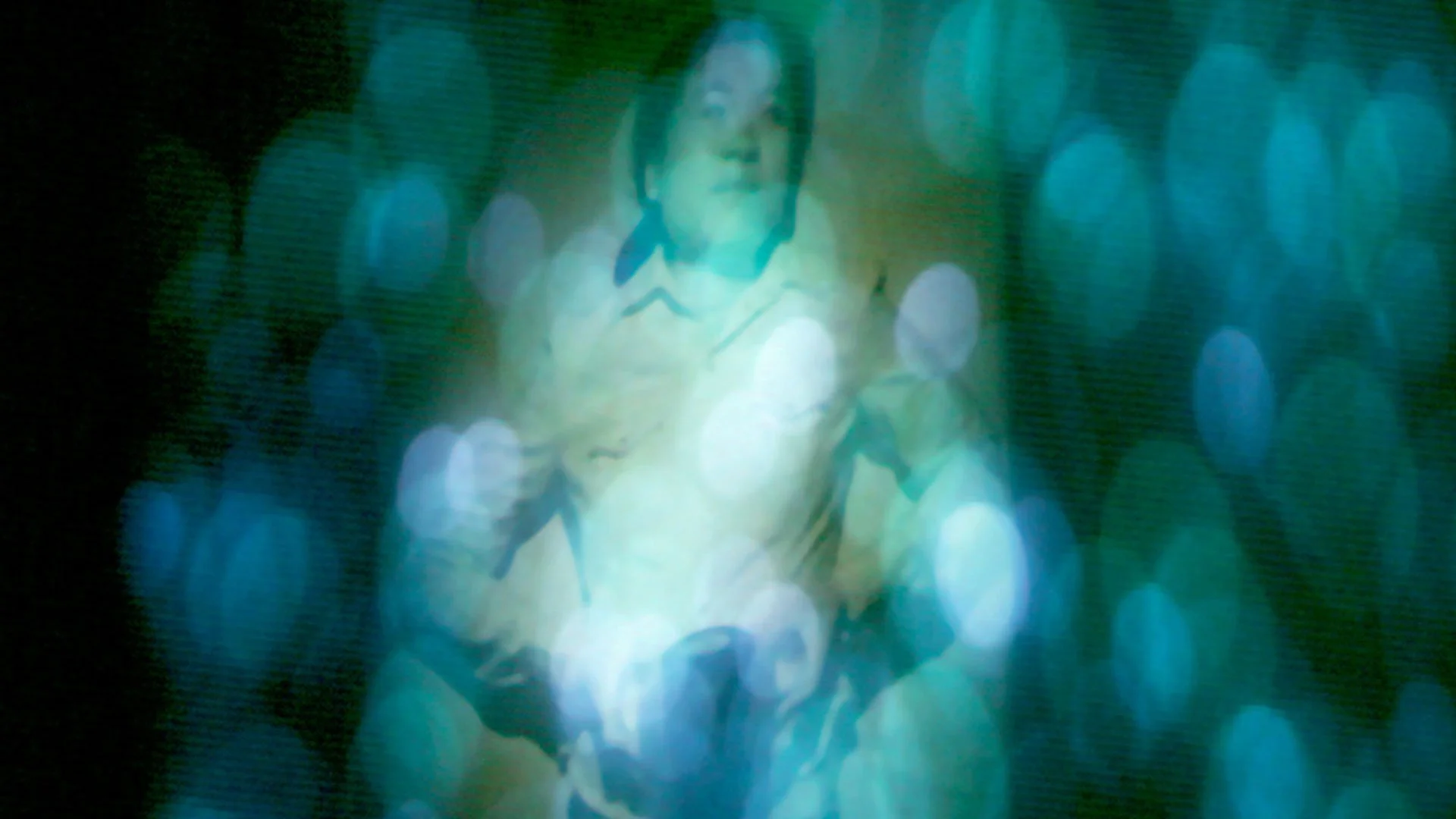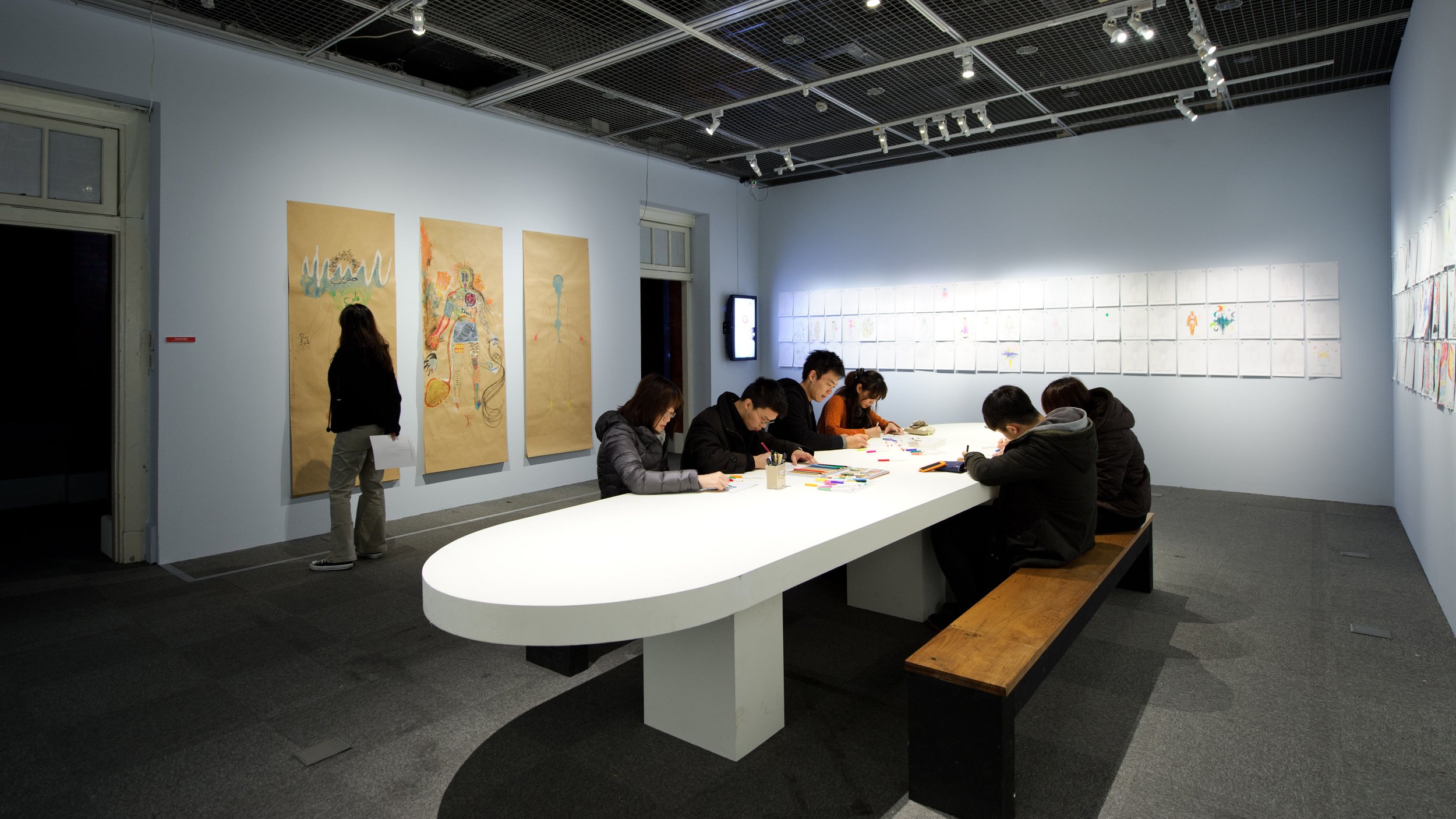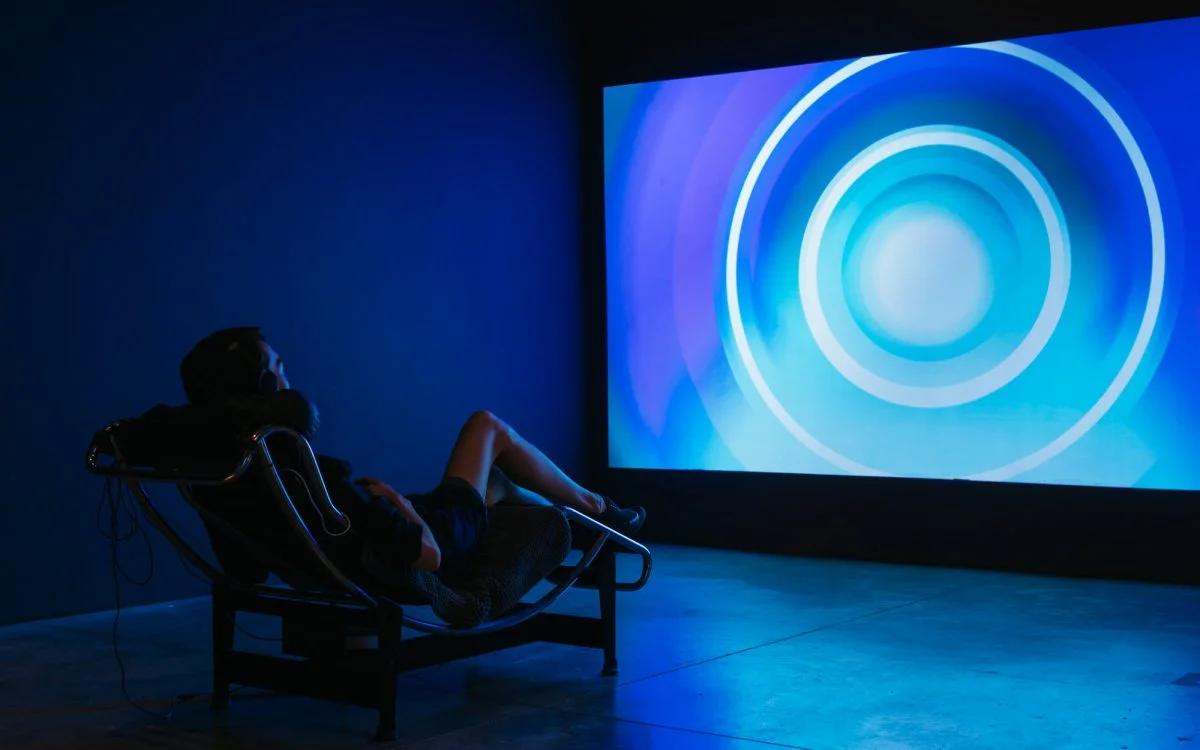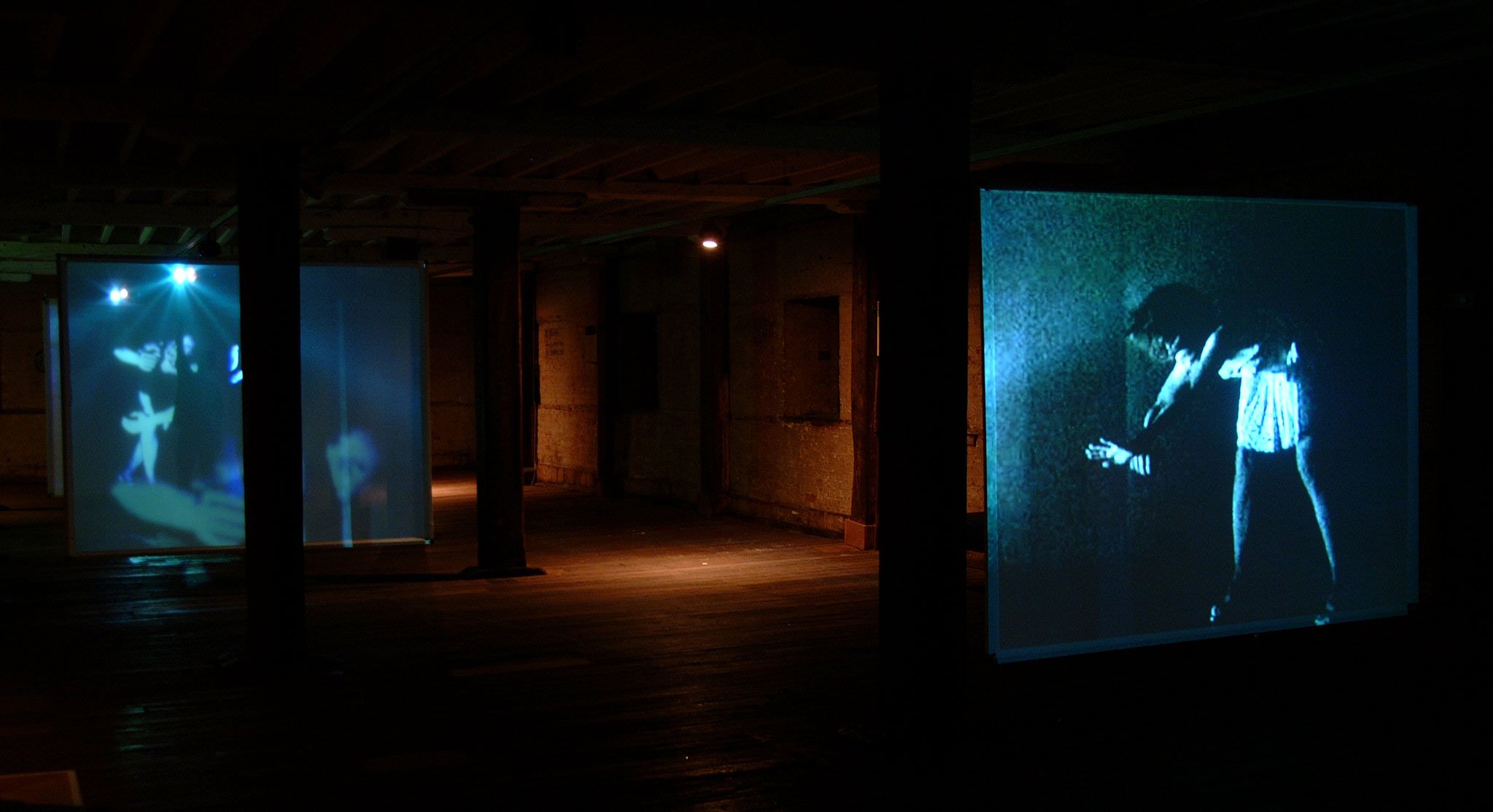George Khut’s work with body-focussed interactive art is unique in it’s focus on the experiences of embodiment that bio-medical technologies and biofeedback training methods can support.
The works use analogue and digital technologies to measure changes in our nervous system, as revealed through such processes as heart rate, and brainwave activity. These measurements are then used to modulate live electronic sounds and images, providing a realtime display of these charges as they are unfolding from one moment to the next.
More than simply a novel application of medical technolgies - his body-focussed interactive works highlight - through hands-on ‘learning-by-doing’ - the profoundly embodied aspects of our being, and the deep entanglement of body and mind.
This is the essense of biofeedback training in clinical, theraputic practice - and Khut’s interactive artworks apply these principals to a creative re-imagining of selfhood, agency and embodiment.
In this sense, his biofeedback works provide an artistic and cultural response to the important transformations that have been taking place in the feilds of physiotherapy and psychotherapy since the second half of the 20th Century: the Somatic-bodywork methodologies for movement education and rehabilitation, and the ‘Somaesthetic’ philosophy of contemporary Pragmatist phillosopher, Richard Shusterman.
His 2006 Doctoral Exegesis “Development & Evaluation of Participant-centred Biofeedback Artworks” documents his early explorations into biofeedback as a creative arts practice. The complete, illustrated version of this exegesis is available for download in the Research section of this site, or directly via this link.


